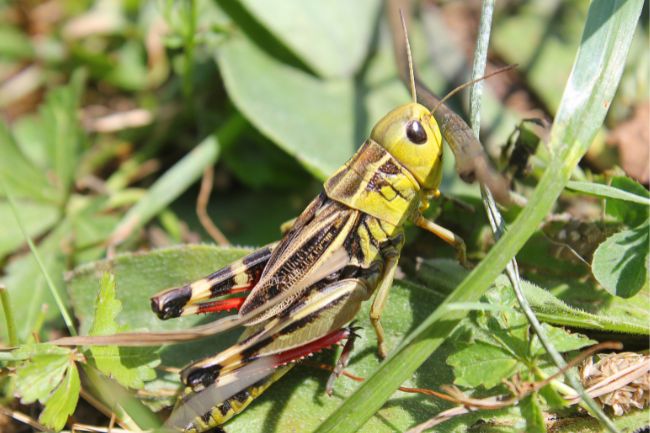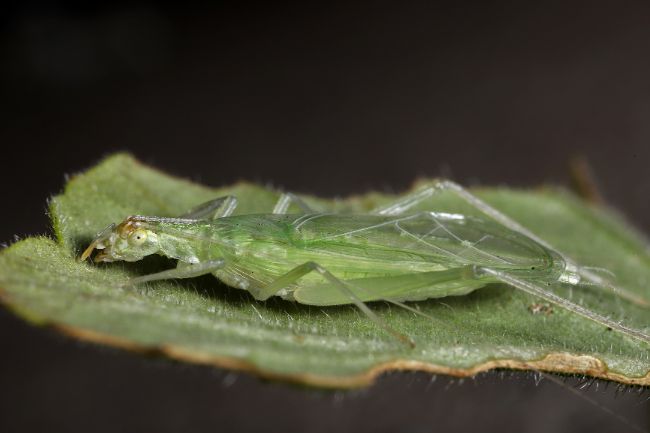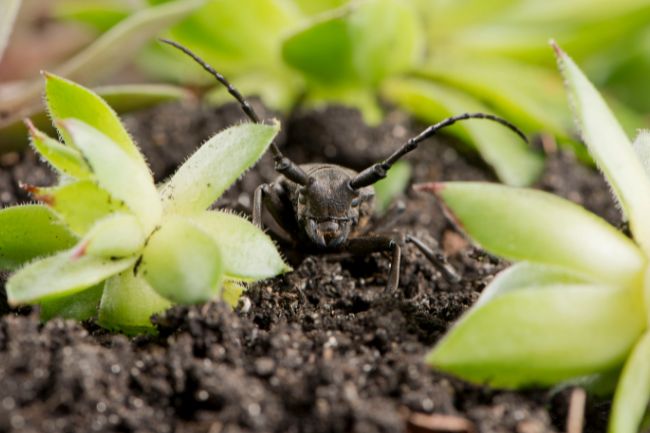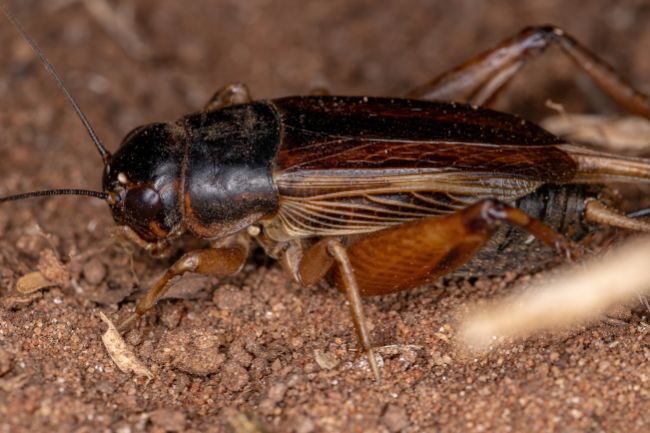Crickets are a diverse and widespread group of insects, found across most of the globe. Many people may mistakenly group them with grasshoppers, to whom they are distantly related. However, crickets generally have a distinctly rounded body, long antennae and use their wings rather than their legs to make their chirping calls.
There are still many similarities. Both crickets and grasshoppers have strong back legs, which they use to jump. Both are well-known for their calls, but grasshoppers are more likely to call in the day and crickets tend to be nocturnal and therefore active at night.

Also read: Crickets and Their Need for Light
Understanding Cricket Wing Structure and Flight Capabilities
Crickets are a diverse and interesting group. Within this group there are those that have wings and those that don’t. Knowing if a cricket can fly can help with identification and to better understand their lifestyle.
Common Questions
Do all crickets have wings?
Not all crickets have wings, some have lost their wings.
Can crickets fly?
Some crickets can fly, while others can’t. The size of their wings is often variable as well, meaning the distance they can fly can vary a great deal too.
How do crickets use their wings?
Crickets both use their wings to fly and to make noise. These noises help them to attract mates.
Why do some crickets not have wings?
As some species have evolved, their lifestyles have meant that wings have become less useful to them. Losing them has therefore had no competitive disadvantage, meaning over time they evolved to be wingless.
Can wingless crickets still jump?
Wingless crickets can still jump, as it’s their back legs that allow them to jump significant distances.
Are there different flying abilities among cricket species?
Wing sizes often vary a great deal between species, and some crickets can’t fly at all. This means there is a great deal of variability in flying ability between species.

Also read: Do Grasshoppers Fly? How and Why do They Use Wings?
Cricket Anatomy
Wing Types
Description of forewings and hindwings in crickets
Crickets have two pairs of wings, however the pairs are distinctly different from each other. The forewings, or elytra, are made of a much tougher material than the hindwings. These wings act as a cover for the more delicate and fragile hindwings.
The elytra also gives the cricket its music playing ability, as they have a jagged comb-like structure only the edge of the wing, that they rub together by lifting the wings up at a 20 degree angle and rubbing the wings together like a violinist moving a bow over the strings. This causes the resonating portion of the wings to create a high-pitched noise.
The back wings are much thinner, and more designed for flight. These stay folded up under the elytra unless in flight.
Differentiation between functional and non-functional wings
Whether a crickets has functional wings can be hard to tell unless you see them flying. In some species the functionality of their wings will change throughout their lifetime, allowing them to fly for a short while after metamorphosis, in order for them to distribute away from their relatives and diversify the gene pool, and then their wings will become non-functional so they can put their energy into breeding.
Also read: The Diversity of What Crickets Eat
Wing Structure
Explanation of the wing’s composition (membrane and veins)
The hindwings of a cricket are made up of a thin membrane, which has a series of veins running across it. These veins supply the wings with oxygen and help move heat around the insect’s body. The wing is moved by muscles connected at its base.
Role of the wings in cricket locomotion
How well a cricket can fly depends in part on the size of its wings, but in general crickets aren’t great flyers. They often use their flight largely to help flee from danger, allowing them to effectively dart out of the way.
Wing Development
Crickets start their lives as eggs, which the female lays in a suitable spot. The eggs then hatch into nymphs, tiny crickets without any wings. These crickets will eat and grow, bursting out of their skin in growth stages known as instars. Once they complete their final moult they will be an adult and their wings will have developing during that final moult.

Adult Stage
Transformation of wings in adult crickets
Once the adults emerge from their moult it will take time for their new exoskeleton to harden. During this time they are very vulnerable, and can be easily picked off by predators. Once their exoskeleton is hardened and their wings have dried, they’ll be ready to fly.
Importance of wings for reproduction and survival
It’s male crickets that enjoy singing their songs to the ladies. This draws the females to them, but also demonstrates that they are a large and healthy male, all good info.
Also read: Here’s “How Does a Bee Fly & How its Wings Work” (Explained)
Flight Capabilities
Wing Movement
- When ready to fly the crickets will lift their forewings and release their hindwings from underneath. These will open out to their full extent, and be moved by the cricket’s muscle to raise them off the ground.
- Crickets are particularly graceful fliers, and often use their wings only for short rapid flights.
- The main thing that influences how far a cricket can fly is the size of their wings.
Winged vs. Wingless Crickets
Winged Crickets
The main advantage of being able to fly is to escape from danger. Crickets are on everyone’s menu, so it’s not unusual for them to have to dart out of the way of a hungry mouth.
The second advantage is in being able to move further afield, both to find new places to feed, but also to find mates who aren’t related to them.
Wingless Crickets
Many crickets that don’t have wings or have reduced wings have lost them because their lifestyle is more adapted to keeping close to the ground, such as digging the soil, hiding in crevices and scuttling through the undergrowth. Here the energy spent on wing creation would be wasted.
Crickets without wings may have stronger legs, being more adapted to jumping or crawling.

Also read: “Do Ants Have Wings?” What is Their Function?
Conclusion
The flight capabilities of crickets is very variable, depending greatly on the species. Many crickets can fly however, and will use this ability to escape predators or find food and mates.
The sound of crickets chirping at night is perhaps one of the most engaging in nature. It’s amazing to think this noise is all down to the fact that they evolved wings. While some of them have since lost them, this is still an amazing bit of multipurpose design.
Crickets are an interesting and diverse group, adapted to a wide range of habitats, making them fascinating to study and observe.

